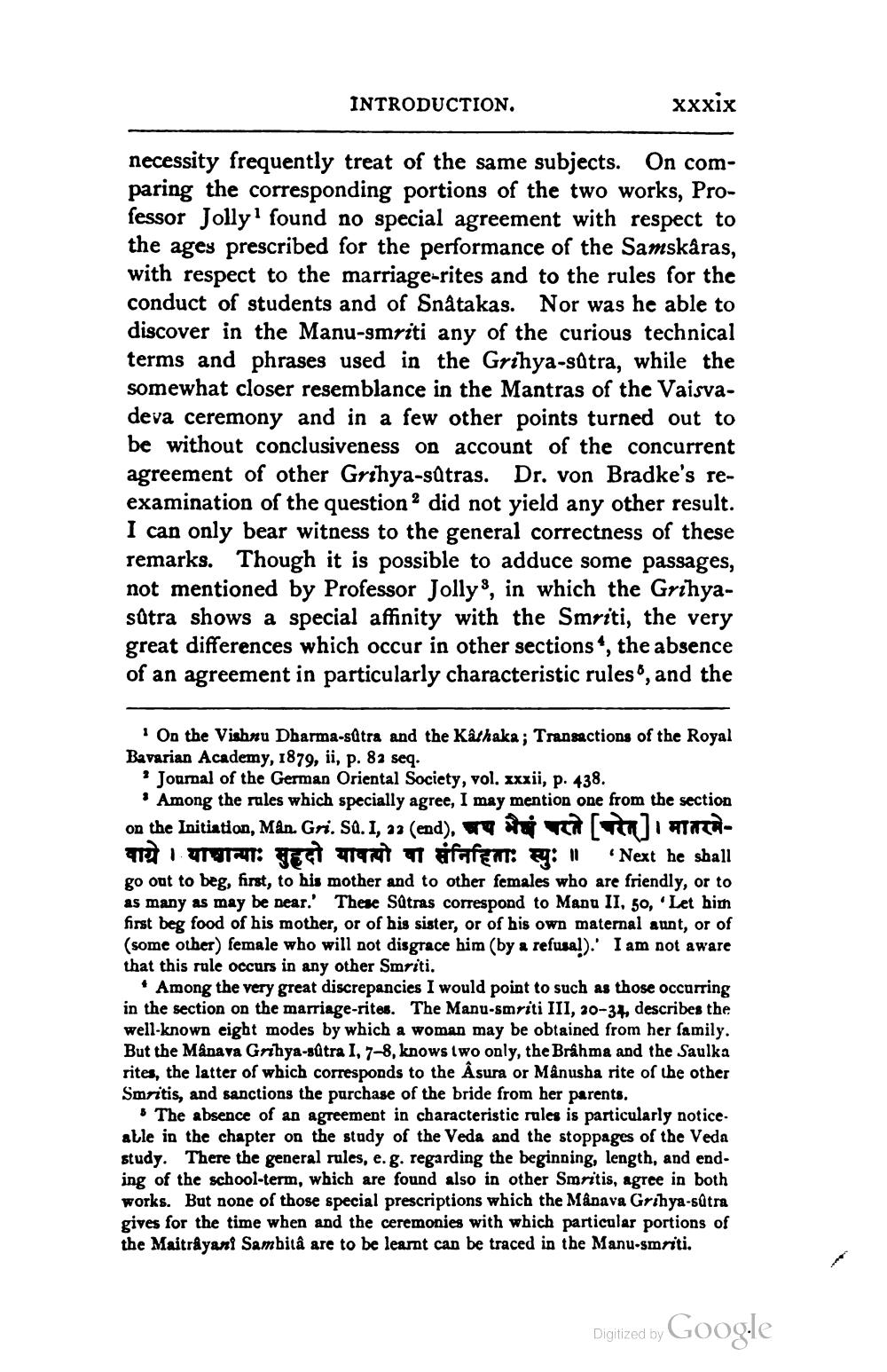________________
INTRODUCTION.
xxxix
necessity frequently treat of the same subjects. On comparing the corresponding portions of the two works, Professor Jolly I found no special agreement with respect to the ages prescribed for the performance of the Samskåras, with respect to the marriage-rites and to the rules for the conduct of students and of Snatakas. Nor was he able to discover in the Manu-smriti any of the curious technical terms and phrases used in the Grihya-stra, while the somewhat closer resemblance in the Mantras of the Vaisvadeva ceremony and in a few other points turned out to be without conclusiveness on account of the concurrent agreement of other Grihya-sūtras. Dr. von Bradke's reexamination of the question? did not yield any other result. I can only bear witness to the general correctness of these remarks. Though it is possible to adduce some passages, not mentioned by Professor Jolly, in which the Grihyasätra shows a special affinity with the Smriti, the very great differences which occur in other sections, the absence of an agreement in particularly characteristic rules', and the
'On the Vishnu Dharma-stra and the Kashaka ; Transactions of the Royal Bavarian Academy, 1879, ii, p. 82 seq. ? Journal of the German Oriental Society, vol. xxxii, p. 438.
Among the rules which specially agree, I may mention one from the section on the Initiation, Man. Gri. Sa. I, 22 (end), writi C# [ra]I ATICA
Tuulgrau: TED Tam grafen: I Next he shall go out to beg, first, to his mother and to other females who are friendly, or to as many as may be near.' These Sätras correspond to Manu II, 50, Let him first beg food of his mother, or of his sister, or of his own maternal aunt, or of (some other) female who will not disgrace him (by a refusal).' I am not aware that this rule occurs in any other Smriti.
* Among the very great discrepancies I would point to such as those occurring in the section on the marriage-rites. The Manu-smriti III, 20-34, describes the well-known eight modes by which a woman may be obtained from her family. But the Manava Gnihya-sútra 1,7-8, knows two only, the Brahma and the Saulka rites, the latter of which corresponds to the Asura or Manusha rite of the other Smritis, and sanctions the purchase of the bride from her parents.
• The absence of an agreement in characteristic rules is particularly notice. alle in the chapter on the study of the Veda and the stoppages of the Veda study. There the general rules, e.g. regarding the beginning, length, and end. ing of the school-term, which are found also in other Smritis, agree in both works. But none of those special prescriptions which the Mänava Grihya-sútra gives for the time when and the ceremonies with which particular portions of the Maitråyani Sambilâ are to be learnt can be traced in the Manu-smriti.
Digitized by Google




